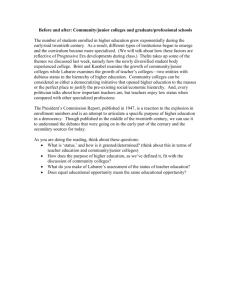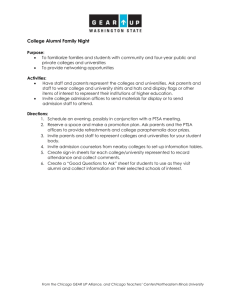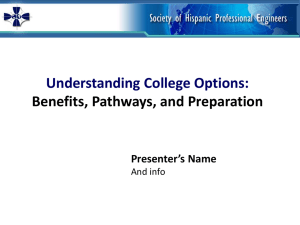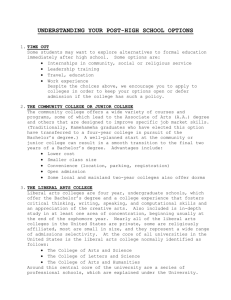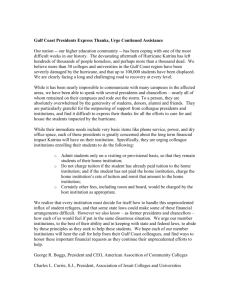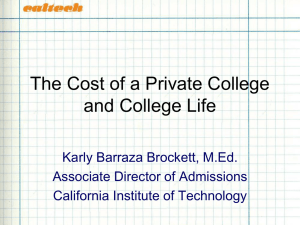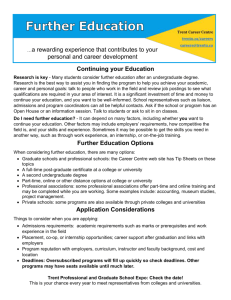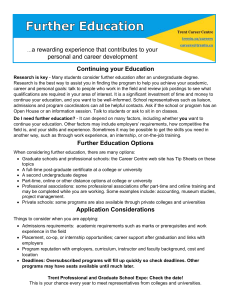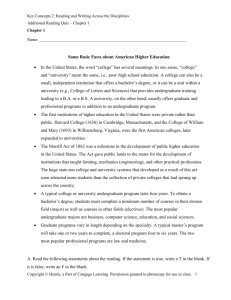Degree Profile contents - American Association of State Colleges
advertisement
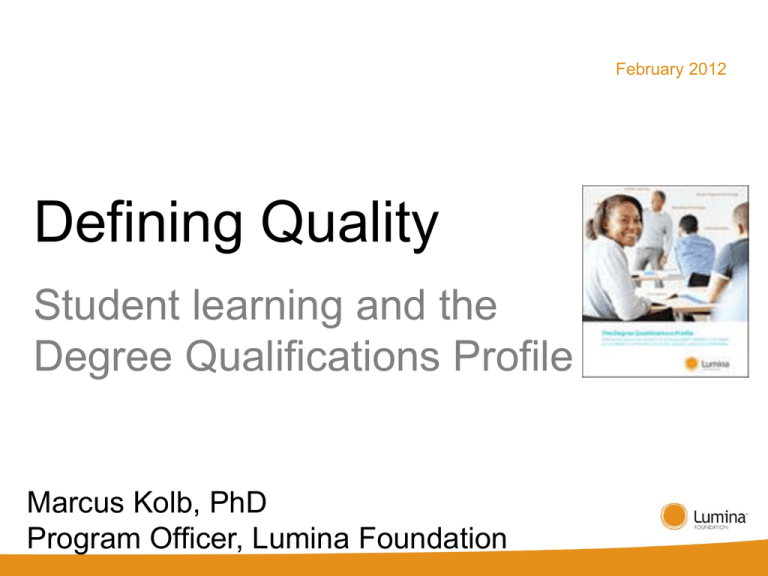
February 2012 Defining Quality Student learning and the Degree Qualifications Profile Marcus Kolb, PhD Program Officer, Lumina Foundation To increase the proportion of Americans with high-quality degrees and credentials to 60 percent by 2025. Why Do We Need a Degree Profile? • Quality = learning • U.S. higher education needs a shared understanding of the learning that degrees represent • Stakeholders are demanding transparency • Provides architecture for addressing challenges faced by system The Authors • Clifford Adelman, Ph.D. Institute for Higher Education Policy (IHEP) Senior Associate • Peter Ewell, Ph.D. National Center for Higher Education Management Systems (NCHEMS) Vice President • Paul Gaston, III, Ph.D. Kent State University Trustees Professor • Carol Geary Schneider, Ph.D. Association of American Colleges and Universities (AAC&U) President How the Panel Approached Its Work • Wide literature review (other national QFs and international writings on outcomes statements and how to frame them) • Review of outcomes adopted by U.S. colleges and universities (Hart Research, 2009) • Emphasis on application and integration (as distinctively “American” undergraduate attributes) • But confined to things that institutions actively teach (therefore few values or attitudes included) • Emphasized Civic Learning as an area where the U.S. already is an international leader Examples of source material • Qualifications frameworks in many other countries • Bologna Process common outcomes benchmarks (e.g. “Dublin Descriptors”) • AAC&U LEAP outcomes statements and rubrics • State-level outcomes frameworks in U.S. (e.g. UT, WI, CSU, ND, VA) • Some alignment of cross-cutting abilities statements among institutional accreditors Degree Profile contents • Three degree levels: associate, bachelor’s, and master’s • Five learning areas: Specialized Knowledge, Broad/Integrative Knowledge, Intellectual Skills, Applied Learning, and Civic Learning • Framed as successively inclusive hierarchies of “action verbs” to describe outcomes at each degree level • Intended as a “beta” version, for testing, experimentation, and further development beginning this year Lumina Degree Profile Applied Learning Civic Learning Intellectual Skills Assoc Bachelor’s Broad, Integrative Knowledge Master’s Specialized Knowledge An Example: Intellectual Skills – Communication Fluency Associate Level: The student presents substantially error-free prose in both argumentative and narrative forms to general and specialized audiences Bachelor’s Level: The student constructs sustained, coherent arguments and/or narratives and/or explications of technical issues and processes, in two media, to general and specialized audiences Master’s Level: The student creates sustained, coherent arguments or explanations and reflections on his or her work or that of collaborators (if applicable) in two or more media or languages, to both general and specialized audiences Potential Applications of the Draft To guide • Quality reviews of institutions • Development of new assessments • Faculty in curricular development • Development of outcomes-based state articulation and transfer standards Potential Applications of the Draft To provide • Common template for accreditation reporting • Basis for establishing “learning contracts” between entering students and institutions • Elevation of outcomes associated with general studies/liberal arts/general education Where We Are Now Near-consensus on essential competencies Abundant evidence that too many students do not benefit from “what works” and make very limited gains in college. − − − − − Arum/Roksa study: Academically Adrift Blaich/Wabash Longitudinal Studies ACT/ETS Studies Employer Reports Faculty Members’ Own Reports The Opportunity Before Us For faculty, it underscores a shift from “my work” to “our work.” Faculty invited to ensure programs feature purposeful research and assignments the build competence, teaching students to apply knowledge to unscripted problems. The Opportunity Before Us For students, it provides a roadmap they really need and moves students’ own work to the center of assessment and accountability. Students are invited to share responsibility for learning and work needed in order to progress, accomplish, and achieve graduation level competence. Conclusions • Making the implicit explicit helps: − Students/learners − Stakeholders: • Faculty • Funders/policymakers • Employers • Making sense of diversity helps • If the sector engages with the Profile it is an enabling mechanism for a larger conversation about the nature of learning and quality in higher education • It is a living tool, not an ossified representation of higher education What Happens Next? • A national conversation • Testing in a variety of settings with a variety of partners • • • • • Higher Learning Commission Western Association of Schools and Colleges Council of Independent Colleges Association of American Colleges & Universities American Association of State Colleges and Universities • Additional grants in 2012 • Future feedback forums • Information “harvesting” and assessment • Opportunity for U.S. higher education Details of the AASCU project Explores... 1) ...the Profile as facilitator for student transfer in GA 2) ...the Profile as a tool for promoting and measuring applied learning in NY 3) ...the Profile as a vehicle to engage faculty in developing trans-campus learning outcomes in TX A Final Thought To contradict my own title of these remarks... The Profile (and all work on defining student learning/degrees/quality) is as much about completion as it is about quality. Improving quality improves completion. So, rather than pursue a completion agenda and a quality agenda, we need to put them under a single heading and talk about them simultaneously with stakeholders. Questions? Comments? Want copies? degreeprofile@luminafoundation.org mkolb@luminafoundation.org

